NB these notes on the early history of Colthurst, Symons and Co. have been made from contemporary newspaper accounts and other records available on Ancestry.co.uk, there has been no access to any Colthurst Symons archive records. More details will be added as they emerge, and contributions are welcome.
This time line was created to accompany much more detailed biography of John Rodamond Symons 1831-1917, which can be found on the website of the Friends of the Wembdon Road Cemetery. On that site is also a biography of William Symons, 1805-1876, which has appendices on the wider Symons family of Bridgwater.
1892 OS Map showing relative positions of brickyards in Bridgwater operated by Colthurst Symons and Co. and by John Symons and Co.
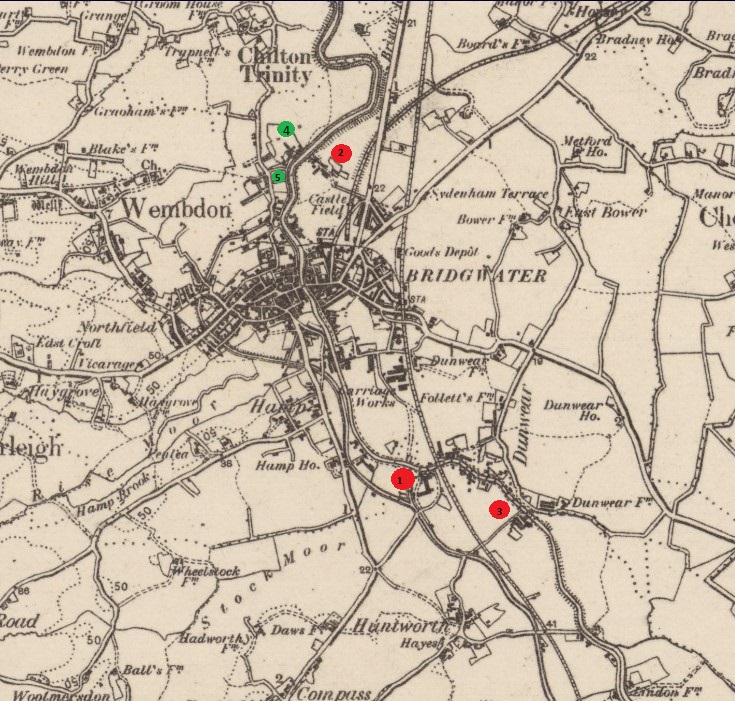
Key to brickyards
Red 1 – Crossway Yard, opened by Thomas Colthurst in the late 1840s, became part of Colthurst, Symons and Co. in 1857.
Red 2 – Castle Fields Yard, opened in 1857/58 by Colthurst, Symons and Co. (Sometimes referred to as Castlefields Yard).
Red 3 – New Yard, opened by 1878 by Colthurst, Symons and Co.
Green 4 – Saltlands Yard, taken over by John Symons and Co. in 1889.
Green 5 – Crowpill Yard, taken over by John Symons and Co. in 1889.
N.B. This map does not show the other brickyards which were operated by Colthurst, Symons and Co. outside Bridgwater.
The firm of Colthurst, Symons and Co. was founded in 1857 by two men – Thomas Colmer Colthurst junior and William Symons.
Thomas Colmer Colthurst junior was baptised in 1821 in North Petherton. His parents were Thomas Colmer Colthurst senior c. 1786 – 1855, and his wife Marianne. Thomas had an older brother Jonathan Colmer Colthurst, born 1815, also a younger brother Richard. The Colthurst family were farmers, owning some of their own land and leasing other fields around Huntworth from Lord Portman.
Thomas Colthurst junior has not been found on the 1841 census, but his father was farming in North Petherton in 1841. His property Hadworthy Farm was rented to a tenant in 1832, and his son Thomas junior was the tenant in 1846 (electoral roll).
North Petherton Tithe Map 1840
The tithe map (available at the Somerset Historic Environment Record) showed that Thomas Colmer Colthurst was a tenant of the 12 acre field 2276 Great Crossway and the smaller field 2275 Crossway Acre. These two fields were the area where the Crossway Yard was started by Thomas Colthurst junior during the latter part of the 1840s.
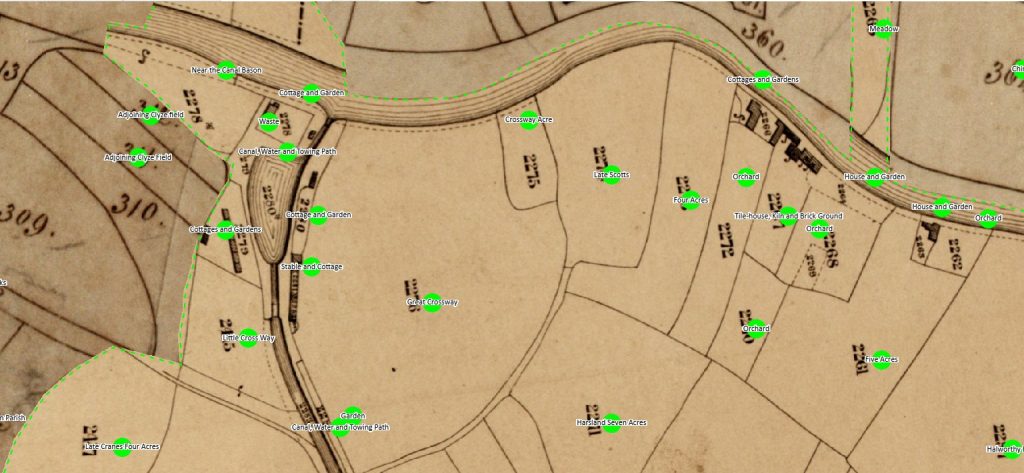
The first edition OS map of 1888 showed that the Crossway Yard covered the same area as these two fields.
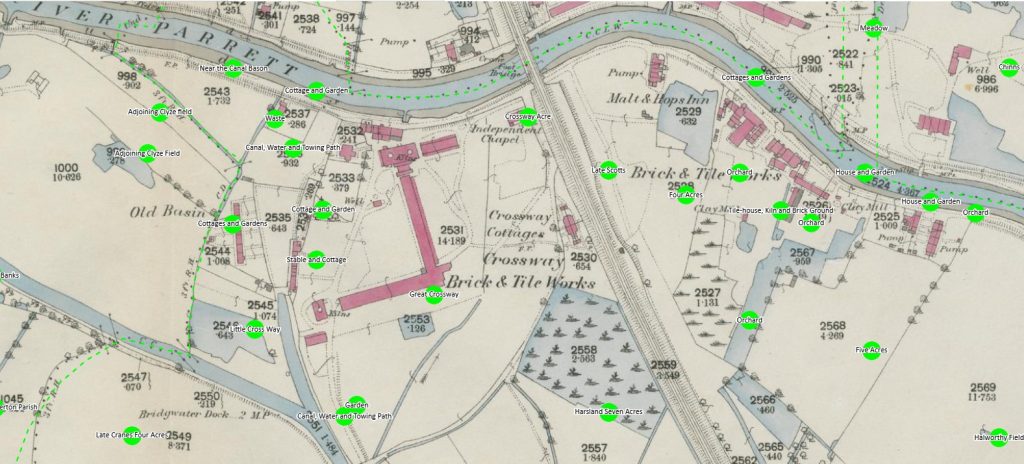
The Gloucester connection?
On the 3rd of September 1845 Thomas Colmer Colthurst junior married Agnes Ann Trivett Colthurst (presumably a relation), daughter of Robert Colthurst, gentleman, in St Andrew’s Church, Clifton, Gloucestershire.
1850
William Symons started developing a new eaves tile for William Beadon. Symons was described as a contractor for Thomas Colthurst, and he was allowed to use the Colthurst drying sheds for this development work on behalf of Beadon, paying Colthurst in labour for this use.
Thomas Colmer Colthurst junior was an investor rather than a hands on manufacturer, whereas William Symons was an experienced tile maker and foreman. Thomas Colthurst also had other business interests, his farm and a partnership in a timber merchant business. It suited Colthurst to have Symons run the day to day business of the brick and tile yard.
1851 census
- Thomas Colthurst senior was still in Huntworth, farmer of 250 acres employing 13 men.
- Thomas Colthurst junior was living in Thurloxton village, near Taunton, described as ‘Brick and Tile manufacturer, general merchant, farmer 270 acres.’
- William Symons was living in Huntworth Basin, master of a brickyard, almost certainly the Crossway Yard.
1855 – Thomas Colthurst senior died (possibly left money to Thomas Colthurst junior to invest?)
1857 (30th December) Colthurst Symons partnership was announced in the Bridgwater Mercury, to be called Colthurst, Symons and Co. The new partnership would operate the existing Crossway Yard, and in addition two new yards – Castle Fields, Bridgwater, and Llanthony, Gloucester. They claimed three patented tiles/bricks – eaves tile patented by Beadon, Double Roman roof tile (patent not found so far, but not all historic patent records have been digitised so difficult to find), also bath brick (patented by John Browne in 1827).
Jan 1858 Colthurst Symons gave a supper for their employees, about 100 men.
Castle Field Yard
The new yard at Castle Fields was to be opened on a 20 acre field which was shown as already owned by Thomas Colthurst on the tithe map – field 875 ‘Part of Great Castle Field’.
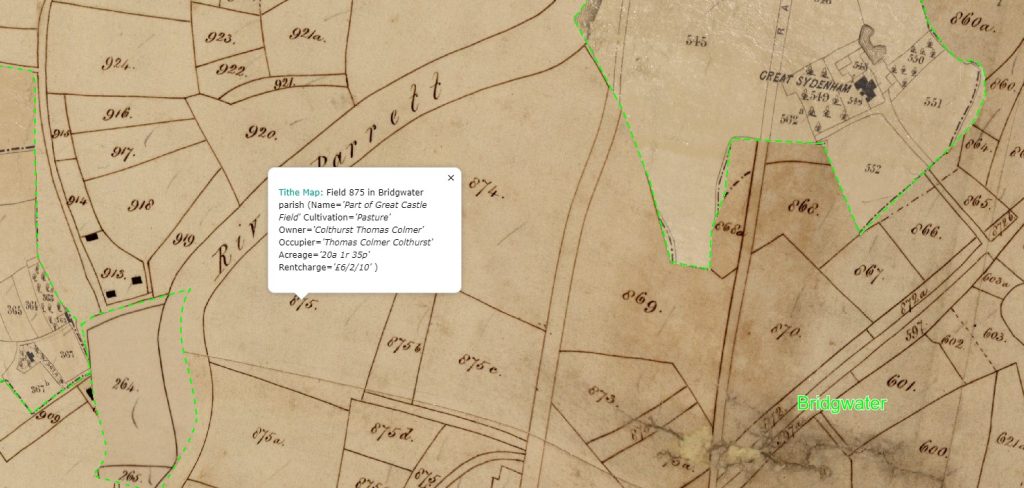
The 1888 OS map showed that the Castle Field Yard was contained in the field called ‘Part of Great Castle Field’.
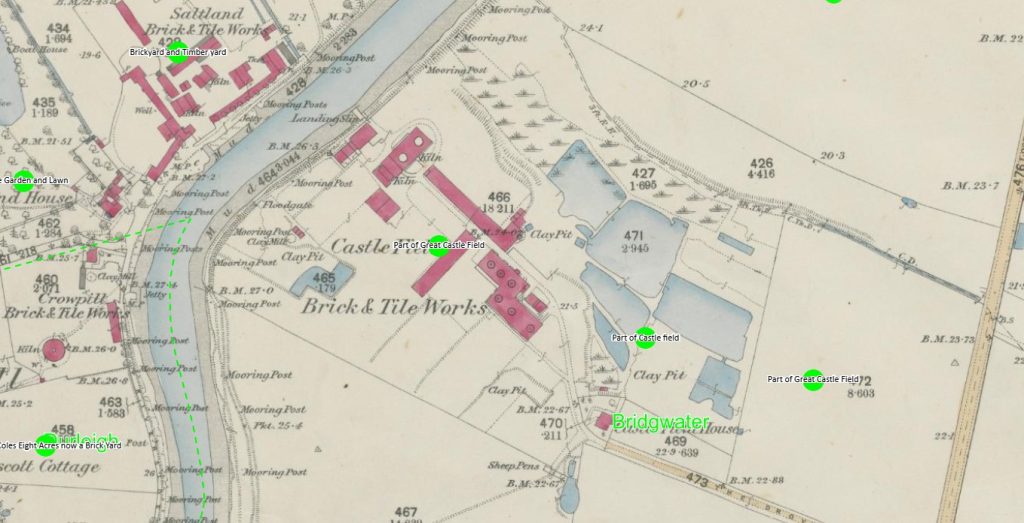
Llanthony Yard Gloucester
This was the first yard to be opened by Colthurst, Symons & Co. outside Bridgwater. It is possible that Thomas Colthurst had already visited the area when he got married. Two Symons brothers were in the area by 1856, Clifford was living in South Hamlet at the time of his first marriage in 1857 to Emma Tucker, and his brother John was a witness. Both Thomas Colthurst and William Symons were shown on the 1868 Gloucester Electoral Roll as tenants of an area called ‘Sudmeadow’ in South Hamlet, which is where the Llanthony Brickyard was.
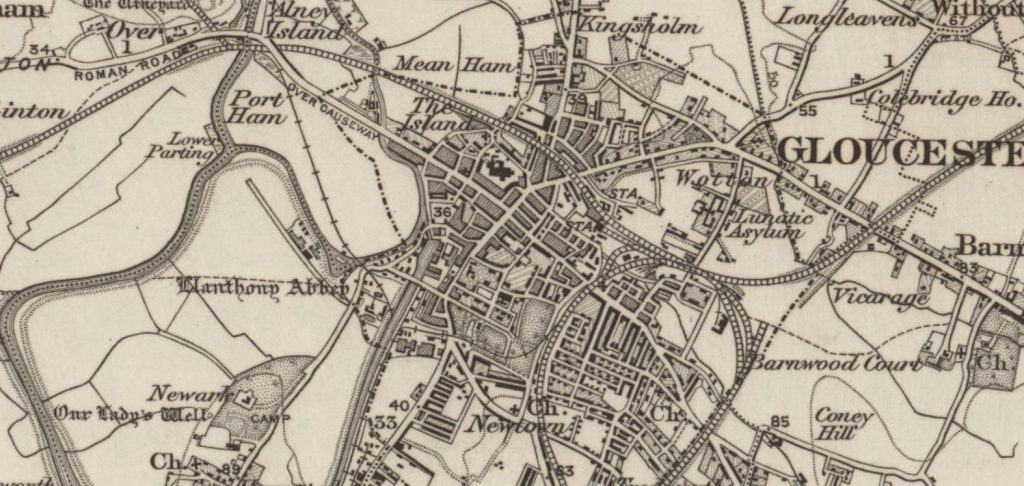
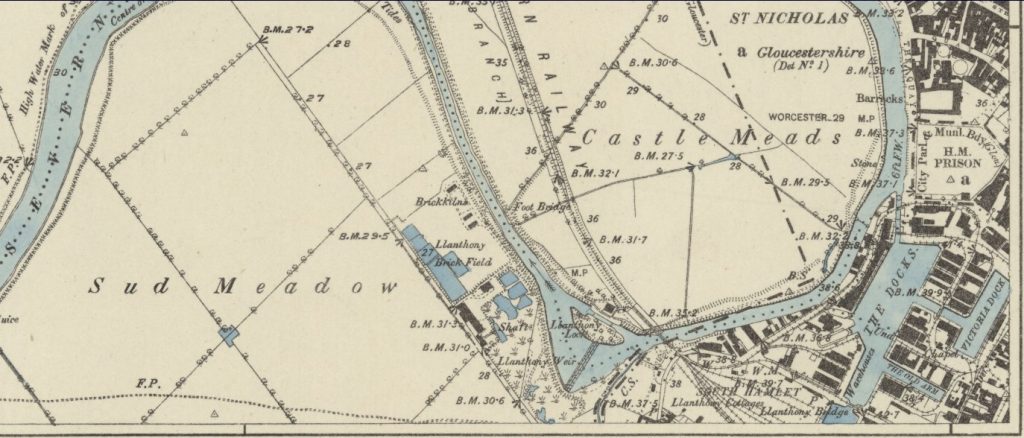
1876 Jan – William Symons died and his personal goods were auctioned off – Octavian House in Taunton Road, the schooner Roseveen and some small properties. He was described in local papers as ‘the active partner’ and ‘the managing partner’ in Colthurst, Symons and Co.
1878 – A notice in the Bridgwater Mercury 25 Sept 1878 listed their yards as – Crossway, New Yard, Castle Yard, Ham Yard, Combwich Yard and Burnham Yard.
1879 – Thomas Colthurst died, he was described in local papers as the senior partner in Colthurst Symons, and Co. brick and tile manufacturers, and Colthurst, Small and Co. timber merchants in Bridgwater.
April 1885 – Colthurst Symons and Co. became a limited liability company, share capital available £100, 000 in £100 shares. William’s youngest son Clifford (1) appointed Managing Director for life. A small number of shares were issued to close family of trustees only, not the full amount of the available capital.
December 1886 – The trustees of Colthurst Symons and Co. Limited were challenged in a court case in Chancery by John Symons. They settled out of court by agreeing to sell the remainder of the old company to Colthurst, Symons and Co. Limited. (John was not satisfied as he complained again in 1905 – circumstances and result unknown, letter in the Somerset Heritage archive.)
1889 – John Symons left Colthurst, Symons and Co. Limited and set up John Symons and Co. He bought the Saltlands and Crowpill Brickyards from the estate of the late Alderman Hammill.

1899 – Clifford Symons 1(son of William) died, his nephew Clifford 2 (John’s son) had become Managing Director by the time of his death in 1927.
Clifford James (Clifford 3 – son of James) was Managing Director by the time of his death in 1943.
